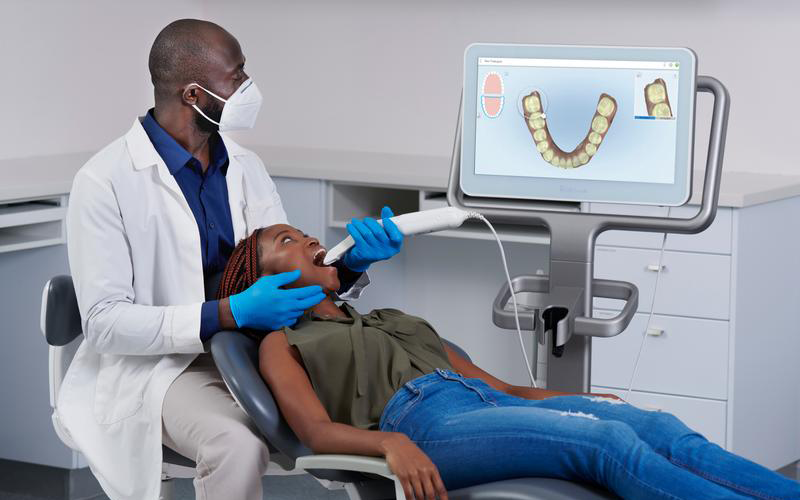Open bite is a dental condition that can have a significant impact on your oral health. It occurs when your upper and lower teeth don't touch or overlap when your mouth is closed.
If left untreated , open bite can contribute to a range of functional problems, including difficulty speaking, excessive mouth breathing,1 gum inflammation,2 and issues chewing common foods.3 Open bites also have negative effects on facial and smile esthetics.
Open bites can be caused by a range of factors, including tongue thrusting, digit sucking, mouth breathing, genetics (jaw growth), poor oral habits, and jaw injuries. Treatment options may include braces, clear aligners such as Invisalign® aligners, or other orthodontic or surgical interventions, depending on the severity of the condition.
Open Bite: What You Need to Know About the Causes
Genetic Factors:4 It is not uncommon for open bite to run in families, as certain physical traits that contribute to the condition may be inherited. For instance, a child may inherit a type of downward growth pattern of the lower jaw from one or both parents, which may lead to an open bite.5
Poor Oral Habits:6 Habits such as thumb sucking can cause an open bite by putting pressure on the front teeth, and facilitating excessive eruption of the back teeth, causing misalignment and open bite. It is important to identify these habits early on and address them to prevent them from worsening open bite.
Jaw Disorders or Injuries:7 Disorders and injuries such as fractures or a dislocated jaw, can also lead to open bite. A fracture is a break in a bone, and a dislocation is when a bone is out of place. If the jaw is fractured or dislocated, it can cause the teeth to not align properly.
Airway and/or Breathing Problems:1 If a person has difficulty breathing through their nose, they may develop a habit of breathing through their mouth. This can cause the tongue to rest in the wrong position, leading to open bite. In addition, conditions such as sleep apnea, which cause interruptions in breathing during sleep, can also contribute to open bite.
Treatment Options for Open Bite
When it comes to treating open bite, there are several treatment options available. Two of the most popular options are braces and clear aligners, such as Invisalign® aligners. Understanding the differences between these treatments is important when deciding which one is right for you.
Treatment for open bite with an orthodontist typically involves an initial consultation to evaluate the severity of your open bite and discuss treatment options. From there, a personalized treatment plan will be created to correct the open bite in your mouth.
Traditional Metal Braces: Work by applying pressure to your teeth to gradually shift them into the correct position. Braces consist of brackets that are attached to each tooth, which are then connected by wires and rubber bands. Periodic adjustments are scheduled to change the dimensions of the wires to gradually move the teeth.
Lingual Braces: Lingual braces are similar to traditional metal braces but are placed on the back of your teeth instead of the front. This makes them less visible but can be more difficult to clean and, in some cases, may irritate the tongue.
Ceramic Braces: Ceramic braces are similar to traditional metal braces, but the brackets are made of a clear or tooth-colored material, making them less noticeable. They function similarly to traditional metal braces. Like metal and lingual braces, there are dietary restrictions in place when being treated with ceramic braces. Specifically, one cannot eat any sticky, chewy or hard foods.
Clear Aligners: Clear aligners, like Invisalign aligners, use a series of clear plastic aligners to gradually shift teeth into the correct position. Invisalign aligners are customized to fit your teeth and are worn for a period of time before being replaced with the next aligner in the series. Invisalign aligners are popular with many patients because they are virtually invisible and can be easily removed for eating and brushing, making them a popular choice for many patients. Because Invisalign aligners can be removed, there are no dietary restrictions necessary when being treated with Invisalign aligners.
Jaw Surgery: Jaw surgery may be necessary for individuals with more severe cases of open bite which are caused by jaw position rather than tooth position.8 The procedure involves surgically repositioning your jaw to correct the bite. It can be effective but is also invasive and may require a long recovery time. Jaw surgery is done in conjunction with orthodontic treatment.




